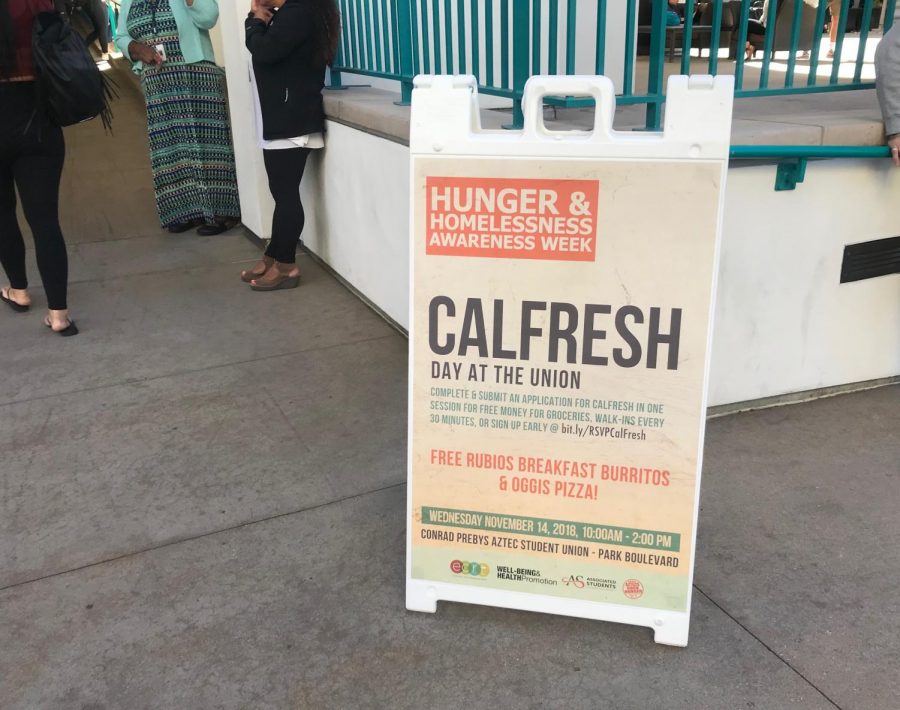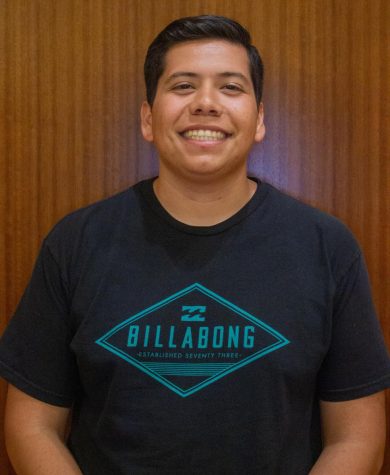San Diego State’s Well-being and Health Promotion Department was helping students enroll in CalFresh in the Conrad Prebys Aztec Student Union on Nov. 14 as a part of the nationwide Homelessness and Hunger Awareness Week.
CalFresh is a statewide program that helps to supplement the food budgets of low-income individuals. Students who consider themselves to be food insecure were able to get assistance from San Diego County Health and Human Services representatives with the CalFresh enrollment process.
Social work graduate Sara Feteih, who was one of the main organizers of the week’s events, said she hopes to bring awareness to a problem that sometimes goes unnoticed.
“Our focus is really to, as the name implies, bring awareness to hunger and homelessness because when people think of those issues they don’t typically think of a college student as someone who may be facing either of those issues,” Feteih said.
With the assistance of the San Diego County representatives, up to 20 students at a time were able to receive help with the CalFresh enrollment process. Feteih said being able to walk students through the process can be a very valuable resource.
“They can come and complete and submit an application for CalFresh right here on campus, which really helps with the accessibility piece instead of having to go off campus or to the county office and try to navigate that process on their own,” she said.
Public relations senior Stavros Evripidou said, for students who are reluctant to reach out for help, bringing these resources to them is one of the best things the university can do to support those are food insecure on campus.
“I think events like this are very important,” he said. “Obviously, any kid struggling doesn’t want to admit that they’re struggling with getting food, but when there’s something like this (event) … that’s a big stepping stone in the right direction.”
Well-being and Health Promotion director Stephanie Waits Galia said there is a lot of diversity in the ways students experience food insecurity, something that can make the reality of the issue more difficult to identify for those who experience it.
“There are a lot of students who are struggling with food insecurity that might look a lot of different ways,” Galia said. “It might look like they are going hungry every day. It might also be that they skip a couple meals because they needed to buy books and we don’t want that happening.”
Well-being and Health Promotion’s Economic Crisis Response Team was also present at the event. The ECRT helps food and home insecure students by providing them with temporary housing, food cards for groceries and helps them with seeking aid and grants for school costs.
ECRT Coordinator Brianna Douglas said, although the ECRT can temporarily aid students, signing up for CalFresh provides a better long-term solution for food insecurity.
“We offer food cards for a short-term solution, but a long-term solution would be to sign up with CalFresh so that you have ongoing monthly groceries instead of the short term of a grocery gift card,” Douglas said.
For more information on how students can receive help for housing and food insecurity, students can visit the ECRT’s website.










